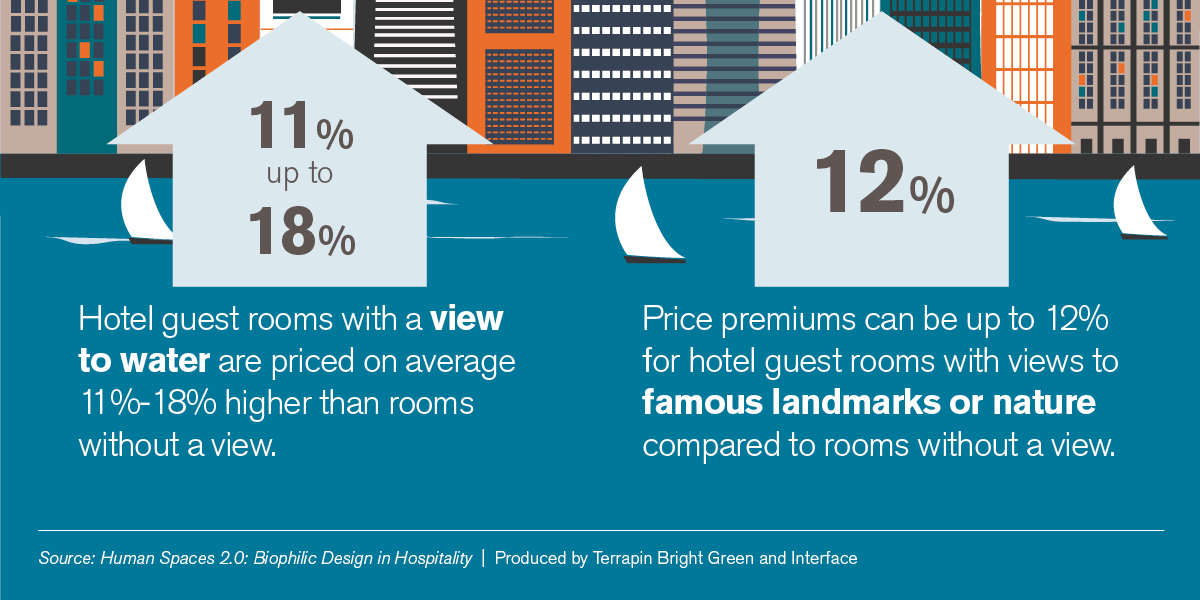Just two years ago, Interface released a third-party verified research report titled “The Global Impact of Biophilic Design in the Workplace,” now known as the Human Spaces report. Our research results were astonishing. With over 7,500 people surveyed across the world, there was a reported 15% increase in perceived wellbeing and creativity and a 6% increase in productivity when people were exposed to biophilic elements in their workspace.
This year, in partnership with Terrapin Bright Green, we took a closer look at the effects of biophilic design in hospitality environments. Once again we were surprised and inspired by the findings. For an industry that measures revenue per bed and calculates the cost associated with each guest room to the penny, it seems like research into evidence-based design strategies like biophilic design would already exist. But there wasn’t anything related to the way design impacts guest experience, room rates or customer behaviour. Or at least not until we took on this project.

The research team intuitively knew that rooms with a view to water should cost a premium – but how much more? Our data showed up to an 18% increase in average daily rate based on a quantitative analysis from Hotels.com. Additionally, we found that hotel guests had a 36% higher dwell rate in hotel lobbies that had biophilic elements. So, not only will hotel guests pay more for a room with a view to biophilic elements, but they will also spend more time in key incremental revenue driving areas such as lobbies, bars and restaurants on the property.

As humans, we are part of the natural world. We are hard wired to appreciate natural elements and analogues to nature. Clever designers are recognising that biophilic design is an evidenced-based strategy for creating beautiful and economically viable hospitality environments.
Learn more by reading the full report “Biophilic Design in Hospitality.”